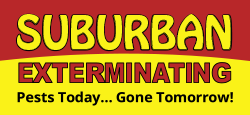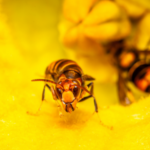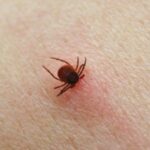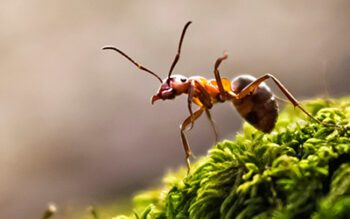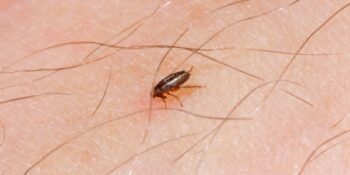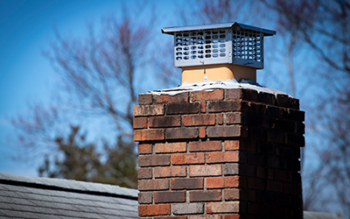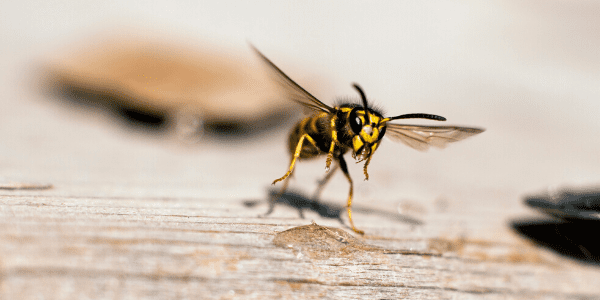
Stinging pests are Long Island’s Pest of the Month! These active summer insects may include digger wasps, bees, cicada killers, hornets, mosquitoes, and yellowjackets.
Today we’re focusing specifically on yellowjackets, which are seen as soon as the temperatures begin to heat up on Long Island and continue into the late summer and early fall. Here are 10 yellow jacket facts that’ll help you better understand these pests and their behavior so you can best protect yourself and your family from them this summer.
Yellowjackets Are Wasps
Though they’re often mistaken for bees, especially due to their black and yellow abdomens, yellowjackets are actually wasps! In addition to their distinctive coloring and markings, yellowjackets are also known for the way they live in colonies (more on that coming up), and their rapid, side-to-side flight patterns prior to landing.
Yellowjackets Are Social Insects
Like ants and termites, yellowjackets are social insects. This means that they live in large, cooperative colonies where each insect has its own specialized role, such as queen, drone, or worker, and completes tasks associated with their distinct roles.
Yellow Jacket Nests Are Made of Cellulose
Ever wondered what yellow jacket nests are actually made of? It’s usually cellulose or paper! Yellowjackets will chew up these materials, which are often found in the ground or in the eaves or attic of your home, and then craft them into nests.
A Single Yellow Jacket Nest Can Contain Thousands of Workers!
We mentioned yellowjackets are social insects and one of the specialized roles within their colonies is the worker. Yellow jacket workers are sterile females who expand the nest, search for food for the colony, and help care for the colony’s queen and her young. It’s typical for large yellow jacket nests to have 3,000-5,000 workers, though it’s possible for even greater amounts!
Yellowjackets Are Territorial
Yellowjackets are one of the more aggressive stinging insects on Long Island and will most likely attack when they feel a threat to themselves or their nest. Yellowjackets are even known to chase humans!
You Shouldn’t Swat at Yellowjackets or Other Stinging Pests
Swatting or striking at yellowjackets is counterproductive, and approaching their nest is never a good idea. The more threatened they feel, the more likely they are to sting you!
A Single Yellow Jacket May Sting Multiple Times
Unlike bees, which can generally sting only one time, yellowjackets have the ability to sting multiple times. This is because a yellow jacket’s stinger isn’t barbed.
Yellow Jacket Stings May Cause Allergic Reactions
Yellowjackets and other stinging insects send over 500,000 people to the emergency room each year. Though it’s common to experience swelling, tenderness, and/or redness after a yellow jacket sting, it’s not uncommon for yellow jacket stings to cause more serious allergic reactions. Emergency medical attention should be sought if you’ve been stung by a yellow jacket and are experiencing coughing, wheezing, problems breathing or swallowing, hives, dizziness, vomiting, diarrhea, or anaphylaxis.
You May Be Attracting Yellowjackets Without Even Knowing It
Yellowjackets are attracted to sweets and meats. If you’re wearing sweet-smelling perfumes or have a lot of sweet-smelling flowers in your yard, yellow jackets will likely be near. Likewise, yellowjackets are also attracted to the proteins in meats; if you’re grilling out, they might fly on in to attempt to get a meal, too! Because of this, it’s always a good idea to minimize perfume use, keep foods covered during the summer, and make sure your garbage cans are closed and emptied frequently.
You Can Protect Your Yard from Yellowjackets This Summer!
If you’re dealing with stinging pests in your yard this summer, the safest course of action is to contact a licensed pest professional like Suburban Exterminating to remove their nests and other stinging pests from your home and yard.
Reach out to Suburban Exterminating today!
